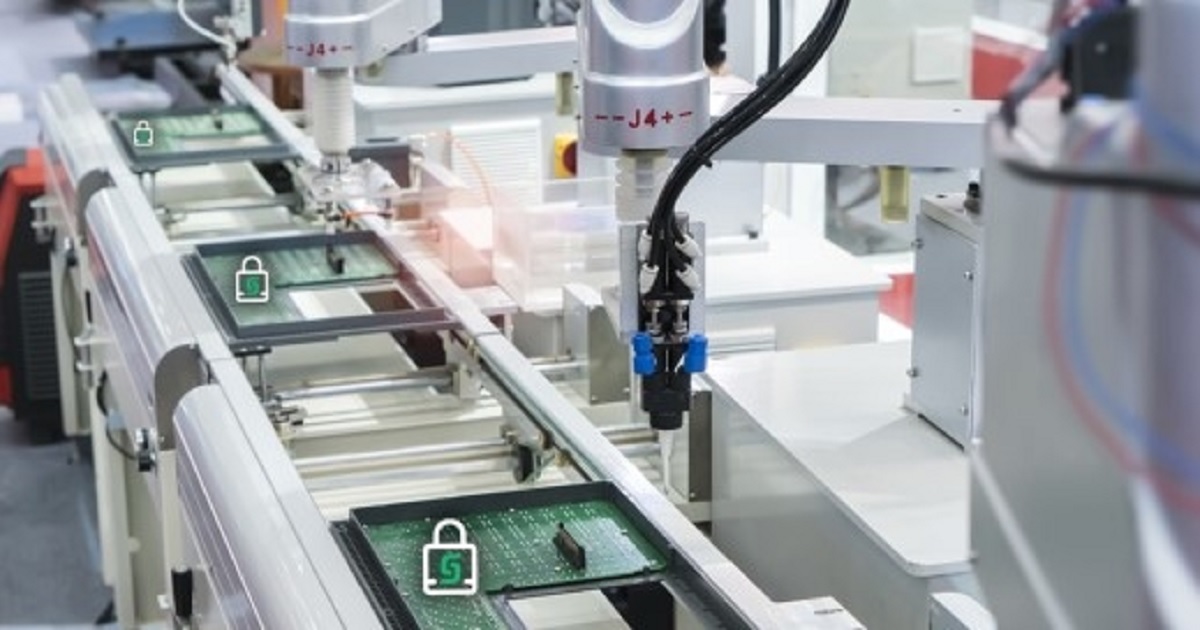
Enterprise Iot
Article | May 11, 2023
Every major industry, including retail, transportation, banking, healthcare, and energy, has significantly benefited from the Internet of Things. Processes like supply chains are where the Internet of Things best demonstrates its promise. Applications for management, forecasting, and oversight aid fleet managers in increasing distribution's operational effectiveness and decision-making openness.
Some of the primary goals for IoT deployment in supply chain management include tracking and monitoring. For example, warehouse and fleet managers can use technology to keep an eye on their stock and freight.
Reasons to Use IoT in Supply Chain Management
Real-time Location-tracking
Thanks to the Internet of Things, managers have access to a consistent stream of real-time data on the product's location and the environment surrounding transportation. You may keep track of the delivery of both finished items and raw materials, and you will be informed if the product is transported in the wrong direction.
Monitoring of Storage Conditions
Environmental sensors allow management to monitor cargo conditions and take immediate action when something changes. One of the most popular IoT supply chain systems, for example, collects data on pressure, humidity, the temperature inside vehicles, and other factors that could harm the goods and then automatically adjusts the environment.
Enhance Your Emergency Planning
Supply chain managers can design routes with the use of IoT and data analytics, taking into account traffic, weather, potential accidents, and other delay-causing events that may occur along the way. The Internet of Things collects all the data required to create adaptable backup plans and identify the source of any current delays. Also, supply chain managers can get alerts from the system in real time, which speeds up reducing risks.
Forecast Goods Arrival and Movement
IoT devices and data analytics systems are used by managers to enhance the decision-making process and boost the accuracy of delivery estimates. Real-time tracking lets businesses keep track of products as they are shipped, predict when they will arrive, and plan for and reduce the risk of delays.
Conclusion
There are many different IoT applications for supply chain management. For example, it improves communication between parties, makes it easier to track and monitor commodities, and makes planning more precise.
As long as you have a clear goal for what you need the technology to achieve for you, an IoT-based platform is an excellent investment for both small and large organizations. It's also essential to bring on a talented team for the design and development phase.
Read More

Security, IoT Security
Article | July 13, 2023
IoT has undeniably become the massive growth propellant for modern-day business. Enterprises employ intelligent systems to improve production in factories, and reduce costs, build industrial automation systems to replace human assignments, monitor and reduce energy; and develop autonomous transportation to enhance driver safety.
Inside these embedded systems are sensors that rapidly transmit data that must be immediately captured, processed, and acted upon.
Traditional embedded database solutions don't understand and meet the complex needs of IoT devices when it comes to processing and managing data. IoT edge database solutions that can understand the constant data stream from sensors enable devices to make crucial decisions in milliseconds.
Real-time Edge Data Processing
Enterprisers and business owners prefer scalable edge data management solutions to deploy hundreds of IoT devices so that each device can manage, collect, and analyze the massive amounts of data these IoT sensors produce without losing performance.
These devices must capture and store critical information so that the IoT node can make independent decisions and trigger appropriate reactions.
Database queries allow device apps to get the information they need to make intelligent decisions in real-time, quickly and without wasting time. To be successful in the IoT, you need the right data management software and the ability to quickly collect and connect device data rapidly to get low latency.
IoT Data Processing and Management
Standard data management solutions do not fully address the complexity of architecting software for IoT data processing. Despite being the primary data source, sensors are often constrained by their limitations and fail to provide sophisticated analysis.
The focus of IoT data analysis and management is to harvest real-time information and make sense of it quickly.
A good solution uses technologies that many developers are already familiar with, like SQL, to solve the new problem of analyzing IoT sensors directly on edge devices.
Conclusion
While building a device application, at every stage, developers must make tough calls to select the best data management and database software to launch their edge-centric IoT systems. Such costly decisions consume significant development and validation time as well.
Using existing IoT data management platforms is a better way to deal with scaling, security, and the weight of data. Businesses can set up, connect, and grow their IoT infrastructure with these platforms. Organizations don't have to build their own IoT infrastructure from scratch. Instead, they can use IoT platforms that give them access to IoT devices, cloud infrastructure, and networks worldwide. Small and medium-sized businesses may find this method saves money.
Read More

Enterprise Iot
Article | July 20, 2023
Explore the IoT tools for security and maintenance. These IoT monitoring tools addresses cyber security and privacy issues, catering to a various users including industrialists & individuals.
With the proliferation of interconnected devices in the Internet of Things ecosystem, ensuring robust security measures has become crucial to protect against cyber threats. The complexity and diversity of IoT systems pose unique challenges, making thorough security testing an essential practice. To address these challenges, various IoT development tools have emerged that enable organizations to assess and mitigate vulnerabilities in their IoT deployments. In this article, explore the top ten tools to secure IoT and IoT testing, equipping professionals and organizations with the means to identify and address potential security weaknesses, thus bolstering the overall security posture of their IoT infrastructure.
1. AWS IoT Device Defender
AWS IoT Device Defender is one of the security IoT management tools, designed to protect and manage IoT devices and fleets. Its auditing capabilities and continuous monitoring enable users to assess their IoT resources' security posture, identify vulnerabilities, and address potential gaps. By leveraging machine learning models or defining custom device behaviors, it can monitor and detect malicious activities, such as traffic from suspicious IP addresses or unusual connection attempts. The tool provides security alerts for failed audits or behavior anomalies, allowing users to mitigate potential risks quickly. Built-in actions facilitate security issue resolution, including device certificate updates, quarantine, and policy replacements. AWS IoT Device Defender offers automation for security assessments, identification of attack vectors, analysis of historical device behavior, and alarm notifications through various AWS interfaces.
2. Dynamic Application Security Testing
Appknox offers two robust mobile application security solutions: Automated Dynamic Application Security Testing (DAST) and Penetration Testing (PT). With Automated DAST, users can assess the security of their mobile apps in real time while running in their operational environment. The solution provides access to real devices, allowing users to replicate real-life interactions and identify security vulnerabilities. On the other hand, Appknox's Penetration Testing solution delivers reliable and thorough security assessments by expert security researchers. Users can request a manual pentest effortlessly, and the skilled team analyzes apps to identify and eliminate potential threats. The process includes identifying the tech stack, analyzing the threat landscape, setting up breakpoints, testing responses, detecting bugs, and performing advanced threat exploits.
3. Enterprise IoT Security
Enterprise IoT Security is a comprehensive Zero Trust solution designed to address IoT devices' security challenges in modern enterprises. It helps eliminate implicit trust and enforces zero-trust principles through least privilege access, continuous trust verification, and continuous security inspection. With this solution, organizations can quickly discover and assess every IoT device, easily segment and enforce the least privileged access, and protect against known and unknown threats. By simplifying operations, Enterprise IoT Security enables faster deployment, with a 15-time faster deployment than other solutions. The solution offers better and faster protection for IoT devices, delivering 70 times more security efficiency and 20 times speedier policy creation.
4. Azure Sphere
Azure Sphere is a secure IoT platform offered by Microsoft that allows businesses to create, connect, and maintain intelligent IoT devices. It provides end-to-end security, from the silicon level to the operating system (OS) to the cloud. With Azure Sphere, organizations can securely connect, manage, and protect existing and new IoT devices. The platform offers over-the-air updates, integration with IoT platform services, and continuous security improvements. It helps businesses deploy real-time security patches, maintain device operations, and accelerate time to market. Azure Sphere incorporates essential security properties and offers comprehensive security and compliance.
5. Microsoft Defender for IoT
Microsoft Defender for IoT is a comprehensive security solution that provides real-time asset discovery, vulnerability management, and threat protection for the Internet of Things and industrial infrastructure, including ICS/OT environments. It offers context-aware visibility into IoT and OT assets, enabling organizations to manage their security posture and reduce attack surfaces based on risk prioritization. With behavioral analytics, it detects and responds to attacks across IT and OT networks. Integrated with SIEM/SOAR and XDR tools, it delivers unified security and leverages threat intelligence for automatic response. Microsoft Defender for IoT is designed to meet the unique security needs of various industries and supports complete endpoint protection when combined with Defender for Endpoint.
6. IoT Security
Forescout offers an IoT security solution that automates security measures and provides visibility for every device connected to the network. Their zero-trust approach ensures complete device visibility, proactive network segmentation, and least-privilege access control for IoT, OT, IoMT, and IT devices. The platform classifies and monitors devices in real time, identifies weak credentials, and enforces strong passwords. It also enables dynamic network segmentation and automates zero trust policy orchestration across multi-vendor environments. Forescout's solution efficiently manages asset inventory and device lifecycle and has been proven to scale for enterprise-level deployments.
7. ThingSpace
The ThingSpace Platform for IoT offers a comprehensive set of iot tools and devices for developing and managing the lifecycle of IoT devices. It enables connectivity management at scale, allowing secure activation on the Verizon network and providing features to troubleshoot, locate, and manage IoT devices. Whether at the prototype stage or ready to scale for enterprise-level deployment, ThingSpace provides the necessary resources for IoT solution development and management. As a Magic Quadrant Leader for IoT Connectivity Services, ThingSpace offers solutions for software management, device readiness, and overall device lifecycle management. Businesses can collaborate with technology leaders through their Executive Briefing Program to achieve their specific goals and gain a competitive edge.
8. Verimatrix
The Verimatrix Secure Delivery Platform offers a unified user experience by combining cybersecurity and anti-piracy services into a comprehensive cloud ecosystem. It provides media companies, content owners, streaming providers, and broadcast operators with a single pane of glass experience for securing content, applications, and devices. Key offerings include Streamkeeper Multi-DRM for cloud-based digital rights management, Verimatrix App Shield for zero code hardening of mobile applications, Verimatrix Video Content Authority System (VCAS) for real-time monitoring, and Streamkeeper Counterspy for cybersecurity and anti-piracy solutions. The platform also facilitates partner integrations, enabling seamless onboarding and revenue preservation.
9. Trustwave
Trustwave's Managed IoT Security provides comprehensive solutions to secure the Internet of Things (IoT) and minimize the risk of compromise. With expertise from Trustwave SpiderLabs, it offers knowledge about network assets, identifies weaknesses in applications, servers, APIs, and cloud clusters, and enables secure IoT deployment with quick validation of fixes. This reduces the risk of compromised devices, which can lead to various threats, including DoS attacks, privacy violations, and data theft. Trustwave's services cater to IoT developers/manufacturers, offering product security reviews, testing, and incident readiness services. For IoT implementers, it provides managed security services and testing to safeguard deployments and associated data.
10. ARMIS Agentless Device Security Platform
The ARMIS Agentless Device Security Platform supports implementing the Critical Security Controls(CIS) framework. Developed by the Center for Internet Security (CIS), these controls are periodically updated by a global community of experts. ARMIS aligns with the CIS Controls and provides a comprehensive set of security controls to address the framework's requirements. The platform caters to enterprises of all sizes and offers different implementation groups based on risk profile and available resources. With ARMIS, organizations can enhance their cybersecurity posture and implement the CIS Controls effectively.
Final Thoughts
Security is a major concern in IoT tools and software due to the proliferation of connected devices, the diverse and complex nature of IoT ecosystems, the need to protect data privacy and confidentiality, the lack of standardization, the long lifecycles of devices, and the distributed and scalable nature of IoT deployments. Addressing these concerns is crucial to prevent unauthorized access, data breaches, and ensure the integrity and privacy of IoT data.
The IoT tools and technologies discussed in this article represent some of the top options for conducting comprehensive IoT security testing. By leveraging these tools, professionals and organizations can proactively identify and address vulnerabilities in their IoT systems, ensuring their data and devices' confidentiality, integrity, and availability. By incorporating these tools into their security practices, organizations can bolster their IoT security strategy and enhance their ability to protect against emerging threats in the dynamic IoT landscape.
Read More

Article | April 16, 2020
Tech companies are stepping up Internet of Things technologies to protect against COVID-19 and future viruses by using LiDAR and infrared cameras to detect a person’s body temperature from a distance or even handwashing. Keeping the data secure in such detection is also going to be a challenge. One approach is to put a chip inside an IoT device when it is manufactured to enable strong authentication and secure communication, mainly to guard against device counterfeiting. Hitachi Vantara has touted forward looking infrared cameras (FLIR) cameras to detect the temperature of a person from a distance. That way a passenger on a train or a worker or a customer in a store can be non-intrusively screened, according to a blog from Mark Jules, global vice president of smart spaces and video intelligence.
Read More